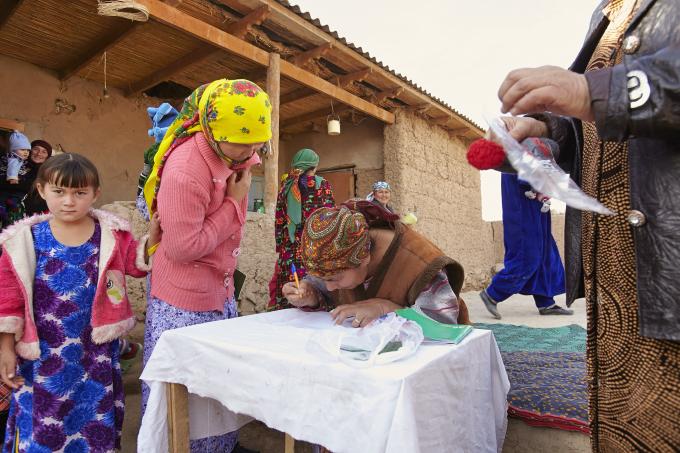Health
The problem:
Maternal and child health issues are among the priority areas identified by the government of Tajikistan (Tajikistan DHS 2012). About 10% of births take place at home without the assistance of a skilled health provider because of difficulties in accessing a health facility, low social status of women, and in some cases, out-of-pocket payments for delivery in hospitals or absence of a specialist in remote settlements (Tajikistan DHS 2012). According to the World Bank Group 2013 report, there is inefficiency in the production of health care and the allocation of resources. Under the United Nations Millennium Development Goals (MDGs), the Government of Tajikistan has committed to reducing child mortality by two–thirds and reducing the maternal mortality ratio by three-quarters by 2015.

What We Do:
Partnership with communities is a critical element of Health Program Strategy to reach the hardest-to-reach communities. Where communities know their rights, are aware of the benefits of health services, and know where, when and how access them, the health services and benefits are greater.
Save the Children trains women’s groups and pregnant women on procedures for getting birth certificates, child care and good nutrition for both mothers and children. Through women’s groups, we help organize activities and meetings for family members and communities to promote breastfeeding and improve public awareness on child care and nutrition.
Save the Children in Tajikistan is working on research to better understand how caregivers use the cradle and document the effects of cradling practices on infant physical, motor, and social development. The overall aim of this project is to obtain a detailed ethnography of the use of a traditional childrearing practice in Tajikistan used throughout Central Asia—use of a “gahvora” cradle.
Since 2013, we have been supporting greater access to health services for children under 5 years through the promotion of birth registration. This will be measured through a baseline household survey conducted to identify children out of reach of health services due to not being registered. This project will improve the capacity of the community-based organizations and groups in rural districts to identify and overcome the barriers to health services and provide children with access to health services
 Central Asia
Central Asia